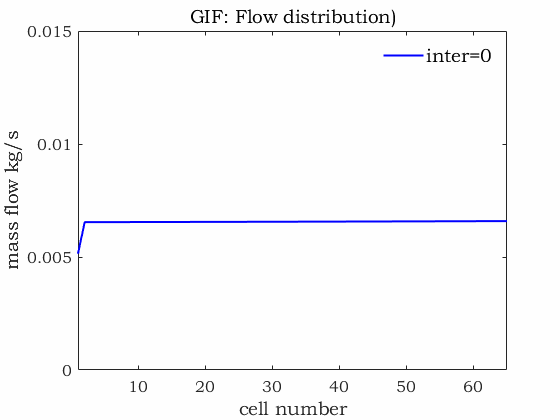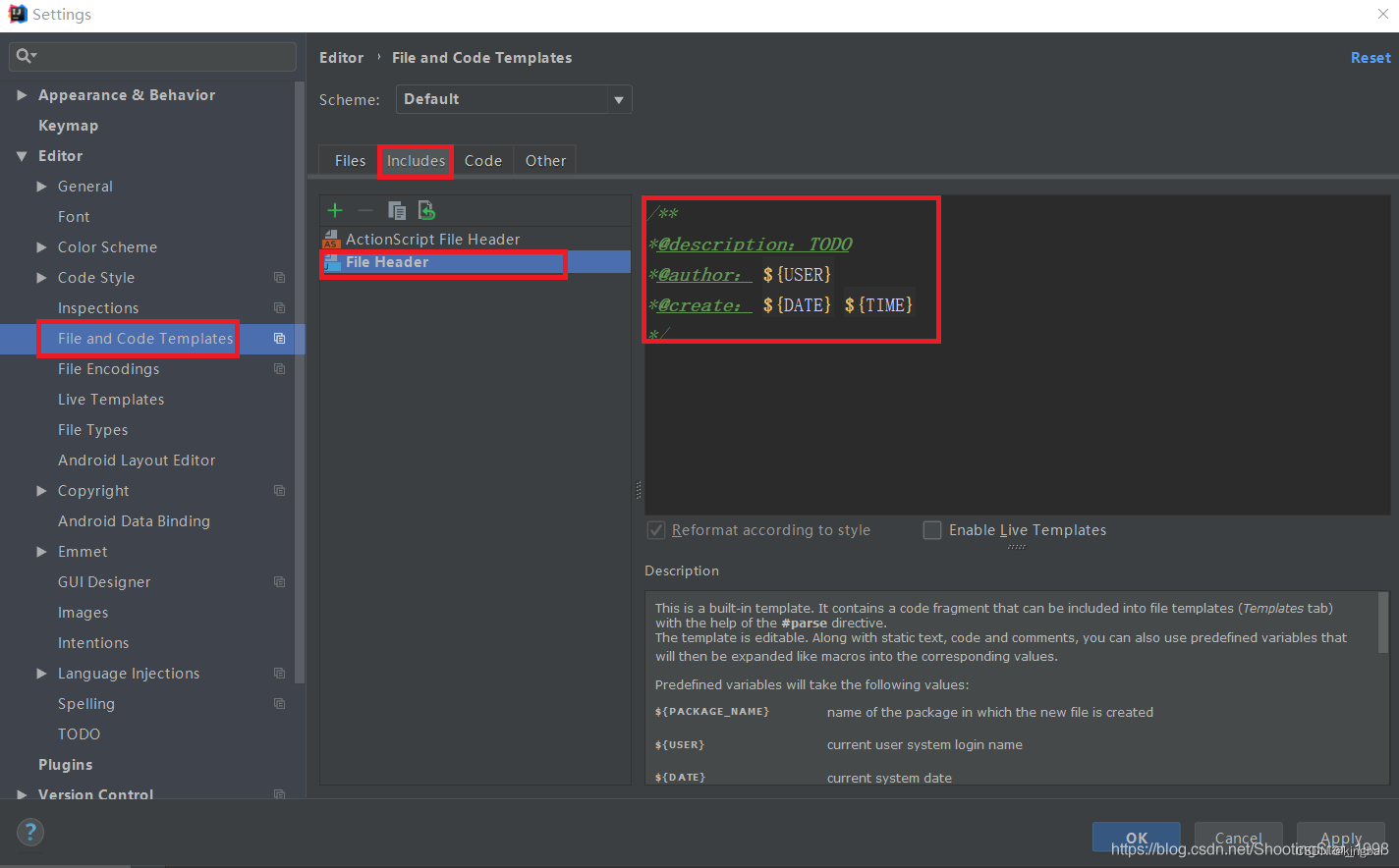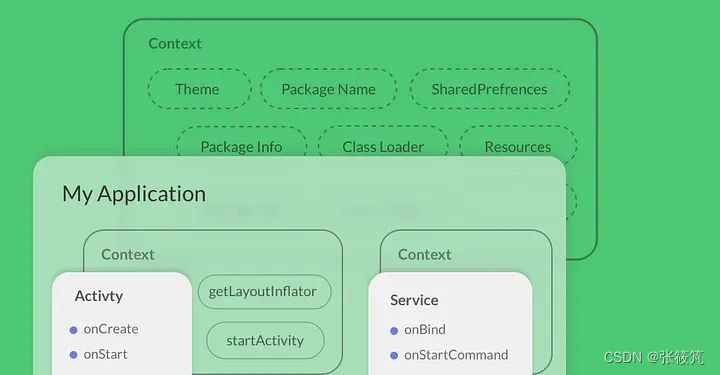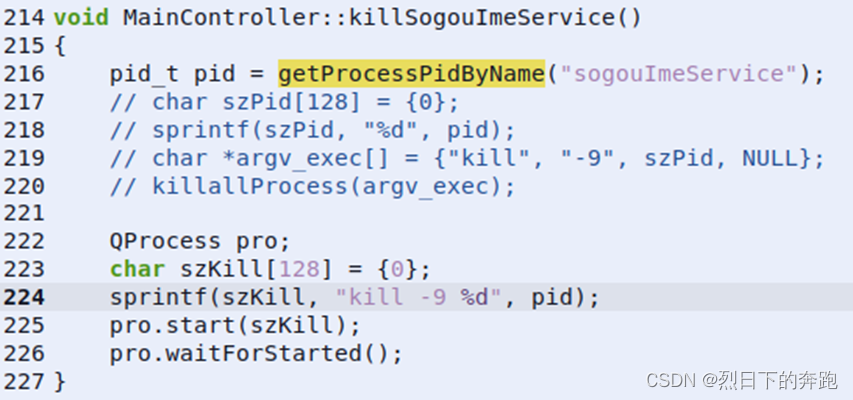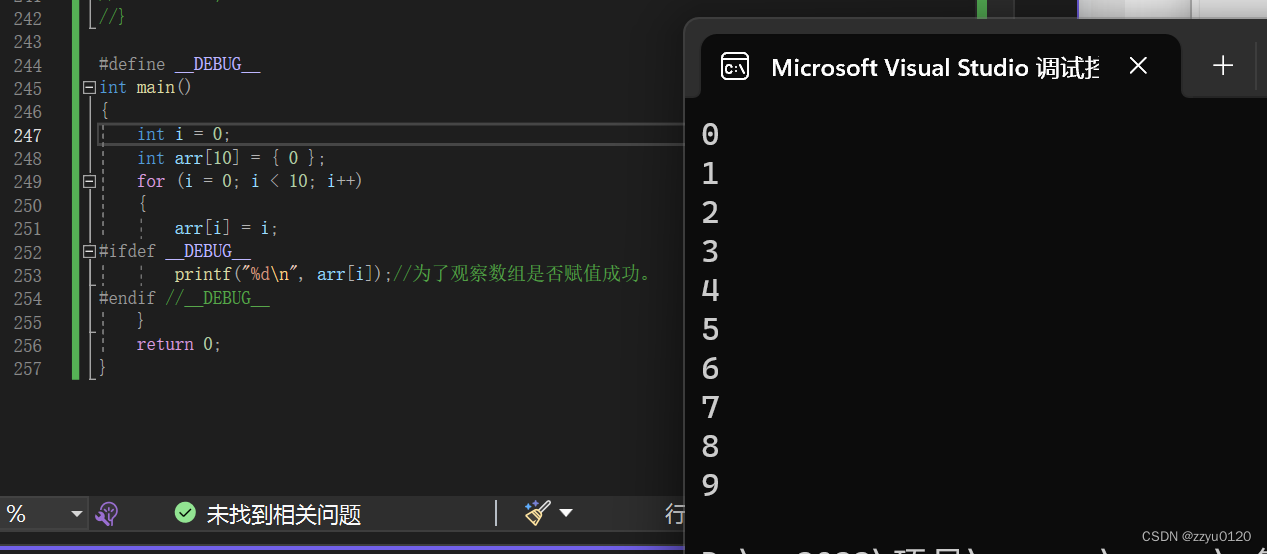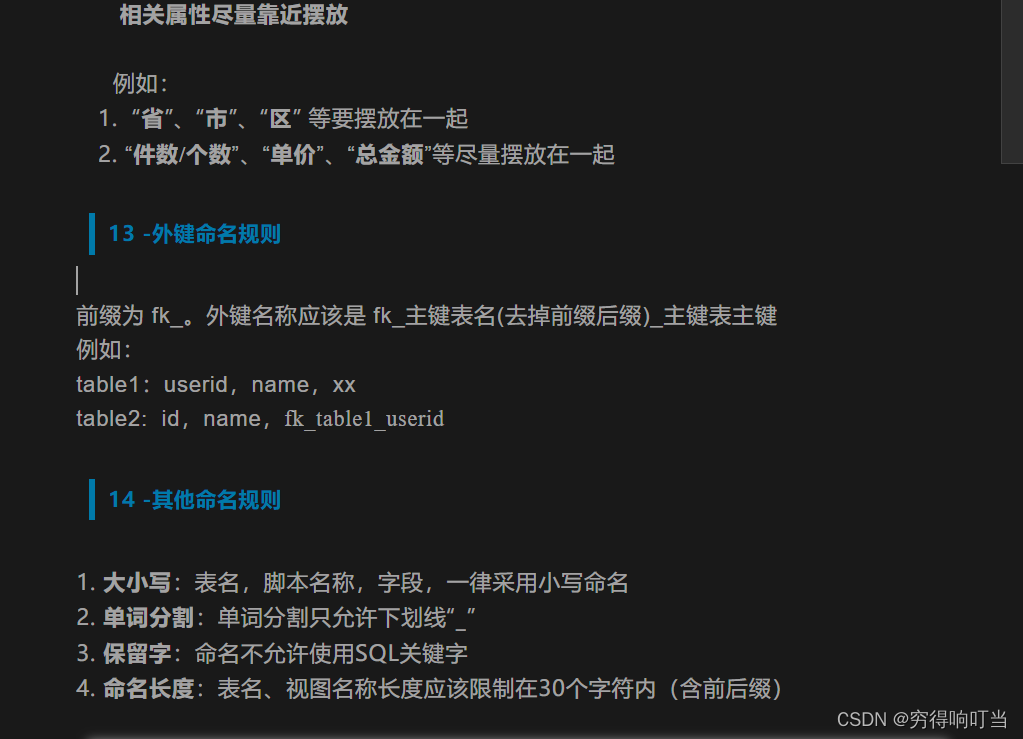【机器学习】Building-Linear-Regression-from-Scratch
- 线性回归 Linear Regression
- 0. 数据的导入与相关预处理
- 0.工具函数
- 1. 批量梯度下降法 Batch Gradient Descent
- 2. 小批量梯度下降法 Mini Batch Gradient Descent(在批量方面进行了改进)
- 3. 自适应梯度下降法 Adagrad(在学习率方面进行了改进)
- 4. 多变量线性回归 Multivariate Linear Regression(在特征方面进行了改进,拓展到多个特征)
- 5. L1正则化 L1 Regularization(在正则化方面进行了改进)
This project is not about using ready-made libraries; it’s an exploration into the core principles that power linear regression. We start from basic mathematics and progressively build up to a fully functioning linear regression model. This hands-on approach is designed for learners and enthusiasts who want to deeply understand the intricacies of one of the most fundamental algorithms in machine learning. Dive in to experience linear regression like never before!
这个项目不是关于使用现成的库,而是对驱动线性回归的核心原则的一次探索。我们从基础数学开始,逐步构建出一个功能完善的线性回归模型。这种实践方法专为那些希望深入理解机器学习中最基本算法之一的复杂性的学习者和爱好者设计。深入体验前所未有的线性回归!
If you find the code helpful, please give me a Star.
如果觉得代码对你有帮助,请给我一个Star.
前往Github下载notebook
https://github.com/Zhu-Shatong/Building-Linear-Regression-from-Scratch

线性回归 Linear Regression
CopyRight: Zhu Shatong , Tongji University
本notebook所有算法均为手写,不使用任何库函数。
(算法设计部分)目录:
- 准备工作:数据的导入与相关预处理,相关工具函数的定义
- (单变量线性回归的)批量梯度下降法 Batch Gradient Descent
- 小批量梯度下降法 Mini Batch Gradient Descent(在批量方面进行了改进)
- 自适应梯度下降法 Adagrad(在学习率方面进行了改进)
- 多变量线性回归 Multivariate Linear Regression(在特征方面进行了改进,拓展到多个特征)
- L1正则化 L1 Regularization(也就是Lasso Regression,应对多变量的过拟合)
0. 数据的导入与相关预处理
在这一section, 我们将会负责导入数据,并对数据进行一些预处理,以便于后续的操作。
data:
我们首先导入的文件为 data.xlsx ,将它存储在data变量中。这个文件中包含了两列数据,分别为 x 和 y 。
我们将会使用这些数据来进行线性回归的训练与可视化。
请注意,在后续本notebook中使用其他数据的时候,请勿再次命名为data。
数据来源:
Data on length-weight and length-length relationships, mean condition factor, and gonadosomatic index of Rutilus rutilus and Perca fluviatilis from the Ob River basin, Western Siberia - ScienceDirect
# 这一code block用来import需要的库import pandas as pd # 用来读取excel等文件
import random # 用来进行随机打乱数据
import numpy as np # 用来进行矩阵运算,应对多变量线性回归
# 这一code block用来读取数据data = pd.read_excel("data.xlsx") # 读取excel文件(单变量线性回归——测试文件)
# 这一code block用来对读取的数据进行一些处理# 从数据框架中提取x和y值
x_values = data['x'].values
y_values = data['y'].values
0.工具函数
在这一section, 我们将会定义一些工具函数,以便于后续的操作。
目录:
- 可视化工具函数
- 线性回归模型计算
- 损失函数计算
# 可视化工具函数
# 对于数据点与拟合直线的可视化
def plot_data_and_line(x_values, y_values, theta_0_final, theta_1_final, cost_history, title):"""Plot data points and the fitted line.:param x_values: 这是一个list,包含了所有的x值:param y_values: 这是一个list,包含了所有的y值:param theta_0_final: 这是一个float,表示最终的theta_0:param theta_1_final: 这是一个float,表示最终的theta_1:param cost_history: 这是一个list,包含了每一次迭代后的损失函数值:param title: 这是一个string,表示图像的标题:return: 返回一个图像"""import matplotlib.pyplot as plt # 用来画图plt.figure(figsize=(12, 5))# Subplot 1: Linear Regression# 这个subplot用来画出数据点和拟合直线plt.subplot(1, 2, 1)plt.scatter(x_values, y_values, color='blue', label='Original Data') # 这里的scatter用来画出数据点plt.plot(x_values, [f_theta(x, theta_0_final, theta_1_final) for x in x_values], color='red',label='Linear Regression') # 这里的列表表达式用来画出拟合直线plt.title(title)plt.xlabel('x')plt.ylabel('y')plt.legend()plt.grid(True) # 显示网格# Subplot 2: Cost function history# 这个subplot用来画出损失函数的变化plt.subplot(1, 2, 2)plt.plot(cost_history, color='green') # 这里的plot用来画出损失函数的变化plt.title('Cost Function History')plt.xlabel('Iteration')plt.ylabel('Cost')plt.grid(True) # 显示网格plt.tight_layout() # 调整子图之间的间距plt.show()
hypothesis:
f θ ( x ) = θ 0 + θ 1 x f_\theta(x)=\theta_0+\theta_1x fθ(x)=θ0+θ1x
def f_theta(x, theta_0, theta_1):"""Linear regression model.:param x: 这是一个float,表示输入的x值:param theta_0: 这是一个float,表示theta_0:param theta_1: 这是一个float,表示theta_1:return: 这是一个float,表示预测值"""return theta_0 + theta_1 * x
cost fuction:
J ( θ 0 , θ 1 ) = 1 2 N ∑ i = 1 N ( f θ ( x ( i ) ) − y ( i ) ) 2 J(\theta_0,\theta_1)=\frac1{2N}\sum_{i=1}^N(f_\theta(x^{(i)})-y^{(i)})^2 J(θ0,θ1)=2N1i=1∑N(fθ(x(i))−y(i))2
def compute_cost(x_values, y_values, theta_0, theta_1):"""Compute the cost function.:param x_values: 这是一个list,包含了所有的x值:param y_values: 这是一个list,包含了所有的y值:param theta_0: 这是一个float,表示theta_0:param theta_1: 这是一个float,表示theta_1:return: 这是一个float,表示损失函数的值"""# 计算的公式为:J(theta_0, theta_1) = 1/2N * sum((f_theta(x_i) - y_i)^2)N = len(x_values)total_error = 0for i in range(len(x_values)):total_error += (f_theta(x_values[i], theta_0, theta_1) - y_values[i]) ** 2return total_error / (2 * N)
1. 批量梯度下降法 Batch Gradient Descent
repeat until convergence:
θ j : = θ j − α ∂ ∂ θ j J ( θ 0 , θ 1 ) ( for j = 1 and j = 0 ) \theta_j:=\theta_j-\alpha\frac{\partial}{\partial\theta_j}J(\theta_0,\theta_1) \\ (\text{for }j=1\text{ and }j=0) θj:=θj−α∂θj∂J(θ0,θ1)(for j=1 and j=0)
Repeat until convergence:
θ 0 : = θ 0 − a 1 N ∑ i = 1 N ( f θ ( x ( i ) ) − y ( i ) ) θ 1 : = θ 1 − a 1 N ∑ i = 1 N ( f θ ( x ( i ) ) − y ( i ) ) x ( i ) \begin{aligned}\theta_0{:}&=\theta_0-a\frac1N\sum_{i=1}^N(f_\theta\big(x^{(i)}\big)-y^{(i)})\\\theta_1{:}&=\theta_1-a\frac1N\sum_{i=1}^N(f_\theta\big(x^{(i)}\big)-y^{(i)})x^{(i)}\end{aligned} θ0:θ1:=θ0−aN1i=1∑N(fθ(x(i))−y(i))=θ1−aN1i=1∑N(fθ(x(i))−y(i))x(i)
def gradient_descent(x_values, y_values, alpha=0.05, convergence_threshold=1e-8, max_iterations=10000):"""Perform gradient descent to learn theta_0 and theta_1.:param x_values: 这是一个list,包含了所有的x值:param y_values: 这是一个list,包含了所有的y值:param alpha: 这是一个float,表示学习率:param convergence_threshold: 这是一个float,表示收敛阈值:param max_iterations: 这是一个int,表示最大迭代次数:return: 这是一个tuple,包含了theta_0, theta_1, cost_history,分别表示最终的theta_0, theta_1和损失函数的变化"""# 计算公式为: theta_j = theta_j - alpha * 1/N * sum((f_theta(x_i) - y_i) * x_i)theta_0 = 0 # 初始化theta_0theta_1 = 0 # 初始化theta_1N = len(x_values) # 样本数量cost_history = [] # 用来保存损失函数的变化for _ in range(max_iterations): # 进行迭代sum_theta_0 = 0 # 用来计算theta_0的梯度sum_theta_1 = 0 # 用来计算theta_1的梯度for i in range(N):error = f_theta(x_values[i], theta_0, theta_1) - y_values[i] # 计算误差sum_theta_0 += errorsum_theta_1 += error * x_values[i]# 注意,所有的theta的更新都是在同一时刻进行的theta_0 -= alpha * (1 / N) * sum_theta_0theta_1 -= alpha * (1 / N) * sum_theta_1cost_history.append(compute_cost(x_values, y_values, theta_0, theta_1)) # 计算损失函数的值if len(cost_history) > 1 and abs(cost_history[-1] - cost_history[-2]) < convergence_threshold:# 如果损失函数的变化小于收敛阈值,则停止迭代breakreturn theta_0, theta_1, cost_history
# 这一code block用来调用上面的函数
theta_0_final, theta_1_final, cost_history = gradient_descent(x_values, y_values)# 打印最终的theta_0, theta_1, cost
theta_0_final, theta_1_final, cost_history[-1]
# 这一code block用来画出数据点和拟合直线
plot_data_and_line(x_values, y_values, theta_0_final, theta_1_final, cost_history,'Linear Regression using Gradient Descent')
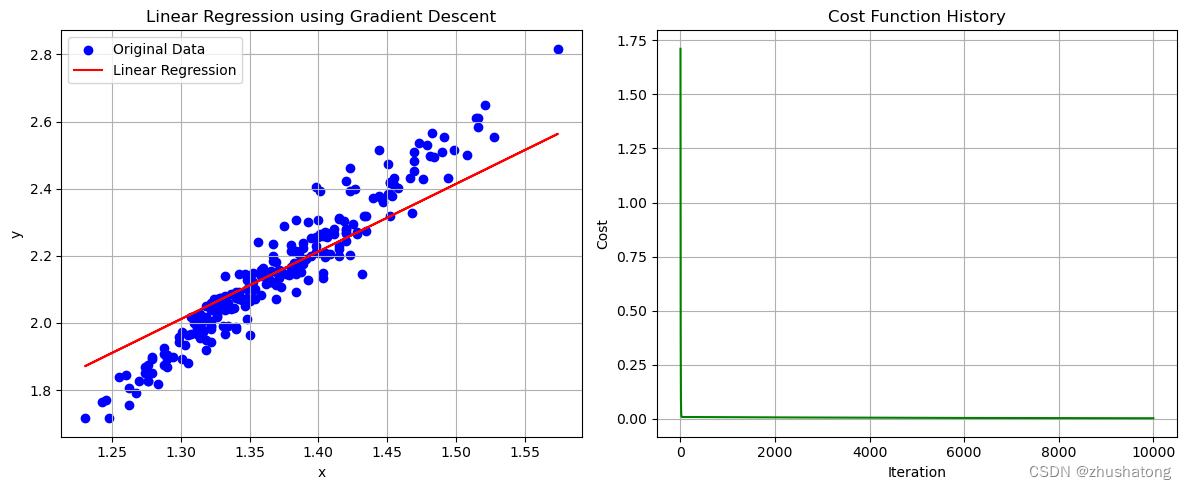
2. 小批量梯度下降法 Mini Batch Gradient Descent(在批量方面进行了改进)
θ 0 : = θ 0 − a 1 N k ∑ i = 1 N k ( f θ ( x ( i ) ) − y ( i ) ) θ 1 : = θ 1 − a 1 N k ∑ i = 1 N k ( f θ ( x ( i ) ) − y ( i ) ) x ( i ) \begin{aligned}\theta_0&:=\theta_0-a\frac1{N_k}\sum_{i=1}^{N_k}(f_\theta\big(x^{(i)}\big)-y^{(i)})\\\theta_1&:=\theta_1-a\frac1{N_k}\sum_{i=1}^{N_k}(f_\theta\big(x^{(i)}\big)-y^{(i)})x^{(i)}\end{aligned} θ0θ1:=θ0−aNk1i=1∑Nk(fθ(x(i))−y(i)):=θ1−aNk1i=1∑Nk(fθ(x(i))−y(i))x(i)
def mini_batch_gradient_descent(x_values, y_values, batch_size=5, alpha=0.05, convergence_threshold=1e-8,max_iterations=10000):"""Perform mini batch gradient descent to learn theta_0 and theta_1.:param x_values: 这是一个list,包含了所有的x值:param y_values: 这是一个list,包含了所有的y值:param batch_size: 这是一个int,表示batch的大小:param alpha: 这是一个float,表示学习率:param convergence_threshold: 这是一个float,表示收敛阈值:param max_iterations: 这是一个int,表示最大迭代次数:return: 这是一个tuple,包含了theta_0, theta_1, cost_history,分别表示最终的theta_0, theta_1和损失函数的变化"""theta_0 = 0 # 初始化theta_0theta_1 = 0 # 初始化theta_1N = len(x_values)cost_history = []for _ in range(max_iterations):# 对数据进行随机打乱combined = list(zip(x_values, y_values)) # 将x_values和y_values打包成一个listrandom.shuffle(combined) # 对打包后的list进行随机打乱x_values[:], y_values[:] = zip(*combined) # 将打乱后的list解包赋值给x_values和y_values# Mini-batch updates# 这里的代码与batch gradient descent的代码类似,只是多了一个batch_size的参数# 对于每一个batch,都会计算一次梯度,并更新theta_0和theta_1for i in range(0, N, batch_size): # i从0开始,每次增加batch_sizex_batch = x_values[i:i + batch_size] # 从i开始,取batch_size个元素y_batch = y_values[i:i + batch_size] # 从i开始,取batch_size个元素sum_theta_0 = 0 # 用来计算theta_0的梯度sum_theta_1 = 0 # 用来计算theta_1的梯度for j in range(len(x_batch)): # 对于每一个batch中的元素error = f_theta(x_batch[j], theta_0, theta_1) - y_batch[j]sum_theta_0 += errorsum_theta_1 += error * x_batch[j]theta_0 -= alpha * (1 / batch_size) * sum_theta_0theta_1 -= alpha * (1 / batch_size) * sum_theta_1cost_history.append(compute_cost(x_values, y_values, theta_0, theta_1))if len(cost_history) > 1 and abs(cost_history[-1] - cost_history[-2]) < convergence_threshold:# 如果损失函数的变化小于收敛阈值,则停止迭代breakreturn theta_0, theta_1, cost_history
# 这一code block用来调用上面的函数# K值的选择需要我们不断尝试与比较,来获取更好的效果
possible_K_values = [1, 3, 4, 5, 6, 7, 10] # 可能得K值需要自己设定,对于不同的数据集,可能需要不同的K值
best_K = possible_K_values[0]
lowest_cost = float('inf')
theta_0_mini_batch = 0
theta_1_mini_batch = 0
cost_history_mini_batch = []for K in possible_K_values: # 对于每一个K值theta_0_temp, theta_1_temp, cost_history_temp = mini_batch_gradient_descent(x_values, y_values, K)if cost_history_temp[-1] < lowest_cost: # 如果损失函数的值更小lowest_cost = cost_history_temp[-1]best_K = Ktheta_0_mini_batch = theta_0_temptheta_1_mini_batch = theta_1_tempcost_history_mini_batch = cost_history_tempbest_K, theta_0_mini_batch, theta_1_mini_batch, lowest_cost
# 这一code block用来画出数据点和拟合直线
plot_data_and_line(x_values, y_values, theta_0_mini_batch, theta_1_mini_batch, cost_history_mini_batch,'Linear Regression using Mini Batch Gradient Descent, K= ' + str(best_K))
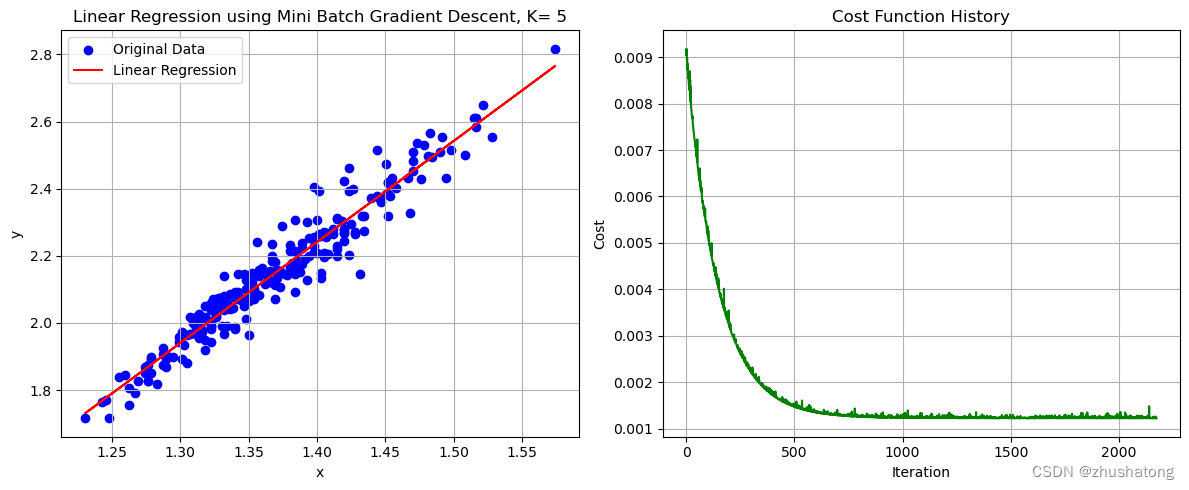
3. 自适应梯度下降法 Adagrad(在学习率方面进行了改进)
θ ( t + 1 ) : = θ ( t ) − a ∑ i = 0 t ( g ( i ) ) 2 g ( t ) \begin{aligned}\theta^{(\mathbf{t+1})}{:}=\theta^{(\mathbf{t})}-\frac{a}{\sqrt{\sum_{i=0}^{t}(g^{(i)})^2}}g^{(t)}\end{aligned} θ(t+1):=θ(t)−∑i=0t(g(i))2ag(t)
其中
g ( t ) = ∂ J ( θ ( t ) ) ∂ θ g^{(t)}=\frac{\partial J(\theta^{(t)})}{\partial\theta} g(t)=∂θ∂J(θ(t))
# 请注意这里的学习率,我将它设定的非常大,得益于adagrad的特性,我们可以使用更大的学习率
# 如果将学习率设定过小,会导致adagrad无法收敛,效果较差
# 所以,我们需要alpha也需要不断尝试与比较,来获取更好的效果
def adagrad_mini_batch_gradient_descent(x_values, y_values, batch_size=5, alpha=3, convergence_threshold=1e-8,max_iterations=10000):"""Perform mini batch gradient descent with adaptive learning rate.:param x_values: 这是一个list,包含了所有的x值:param y_values: 这是一个list,包含了所有的y值:param batch_size: 这是一个int,表示batch的大小:param alpha: 这是一个float,表示学习率:param convergence_threshold: 这是一个float,表示收敛阈值:param max_iterations: 这是一个int,表示最大迭代次数:return: 这是一个tuple,包含了theta_0, theta_1, cost_history,分别表示最终的theta_0, theta_1和损失函数的变化"""theta_0 = 0 # 初始化theta_0theta_1 = 0 # 初始化theta_1N = len(x_values)cost_history = []# 初始化sum_squared_gradients,这是用来计算学习率的sum_squared_gradients_0 = 0.0001 # 较小的值以避免被零除sum_squared_gradients_1 = 0.0001for _ in range(max_iterations):# 对数据进行随机打乱combined = list(zip(x_values, y_values)) # 将x_values和y_values打包成一个listrandom.shuffle(combined) # 对打包后的list进行随机打乱x_values[:], y_values[:] = zip(*combined) # 将打乱后的list解包赋值给x_values和y_values# Mini-batch updates# 这里的代码与batch gradient descent的代码类似,只是多了一个batch_size的参数for i in range(0, N, batch_size):x_batch = x_values[i:i + batch_size]y_batch = y_values[i:i + batch_size]sum_theta_0 = 0sum_theta_1 = 0for j in range(len(x_batch)):error = f_theta(x_batch[j], theta_0, theta_1) - y_batch[j]sum_theta_0 += errorsum_theta_1 += error * x_batch[j]# 计算梯度# 计算公式为: theta_j = theta_j - alpha / (sum_squared_gradients_j ** 0.5) * 1/N * sum((f_theta(x_i) - y_i) * x_i)gradient_0 = (1 / batch_size) * sum_theta_0 # 计算theta_0的梯度gradient_1 = (1 / batch_size) * sum_theta_1 # 计算theta_1的梯度sum_squared_gradients_0 += gradient_0 ** 2 # 更新sum_squared_gradients_0sum_squared_gradients_1 += gradient_1 ** 2 # 更新sum_squared_gradients_1adaptive_alpha_0 = alpha / (sum_squared_gradients_0 ** 0.5) # 计算theta_0的学习率adaptive_alpha_1 = alpha / (sum_squared_gradients_1 ** 0.5) # 计算theta_1的学习率theta_0 -= adaptive_alpha_0 * gradient_0 # 更新theta_0theta_1 -= adaptive_alpha_1 * gradient_1 # 更新theta_1cost_history.append(compute_cost(x_values, y_values, theta_0, theta_1))if len(cost_history) > 1 and abs(cost_history[-1] - cost_history[-2]) < convergence_threshold:# 如果损失函数的变化小于收敛阈值,则停止迭代breakreturn theta_0, theta_1, cost_history
# 这一code block用来调用上面的函数# K值的选择需要我们不断尝试与比较,来获取更好的效果
possible_K_values = [3, 4, 5, 6, 7, 10] # 可能得K值需要自己设定,对于不同的数据集,可能需要不同的K值
best_K = possible_K_values[0]
lowest_cost = float('inf')
theta_0_adaptive = 0
theta_1_adaptive = 0
cost_history_adaptive = []for K in possible_K_values: # 对于每一个K值theta_0_temp, theta_1_temp, cost_history_temp = adagrad_mini_batch_gradient_descent(x_values, y_values, K)if cost_history_temp[-1] < lowest_cost:lowest_cost = cost_history_temp[-1]best_K = Ktheta_0_adaptive = theta_0_temptheta_1_adaptive = theta_1_tempcost_history_adaptive = cost_history_tempbest_K, theta_0_adaptive, theta_1_adaptive, cost_history_adaptive[-1]
# 这一code block用来画出数据点和拟合直线
plot_data_and_line(x_values, y_values, theta_0_adaptive, theta_1_adaptive, cost_history_adaptive,'Linear Regression using adagrad mini batch gradient descent, K= ' + str(best_K))
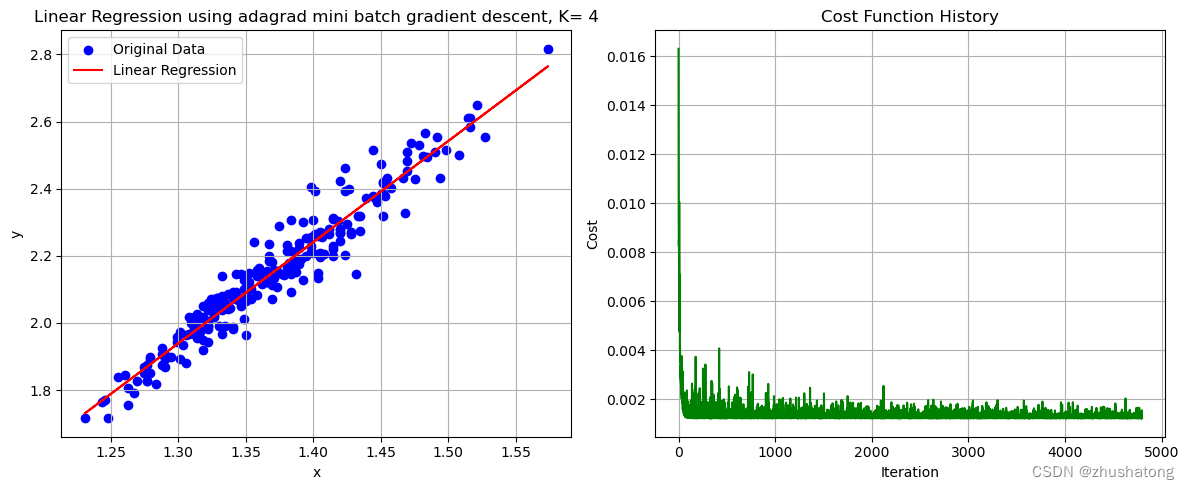
4. 多变量线性回归 Multivariate Linear Regression(在特征方面进行了改进,拓展到多个特征)
f θ ( x ) = θ 0 + θ 1 x 1 + θ 2 x 2 + ⋯ + θ n x n f_\theta(x)=\theta_0+\theta_1x_1+\theta_2x_2+\cdots+\theta_nx_n fθ(x)=θ0+θ1x1+θ2x2+⋯+θnxn
J ( θ 0 , θ 1 , . . . θ n ) = 1 2 N ∑ i = 1 N ( f θ ( x ( i ) ) − y ( i ) ) 2 J(\theta_0,\theta_1,...\theta_n)=\frac1{2N}\sum_{i=1}^N(f_\theta(x^{(i)})-y^{(i)})^2 J(θ0,θ1,...θn)=2N1i=1∑N(fθ(x(i))−y(i))2
def multivariate_gradient_descent(X, y, batch_size=5, alpha=3, convergence_threshold=1e-8, max_iterations=10000):"""Perform mini batch gradient descent with adaptive learning rate for multivariate linear regression.:param X: 这是一个矩阵,包含了所有的x值:param y: 这是一个list,包含了所有的y值:param batch_size: 这是一个int,表示batch的大小:param alpha: 这是一个float,表示学习率:param convergence_threshold: 这是一个float,表示收敛阈值:param max_iterations: 这是一个int,表示最大迭代次数:return: 这是一个tuple,包含了theta, cost_history,分别表示最终的theta和损失函数的变化,theta是一个list"""m, n = X.shape # m是样本数量,n是特征数量theta = np.zeros(n + 1) # n+1 thetas 包含 theta_0X = np.hstack((np.ones((m, 1)), X)) # 在X前面加一列1,用来计算theta_0cost_history = []sum_squared_gradients = np.zeros(n + 1) + 0.0001 # 较小的值以避免被零除for _ in range(max_iterations):# 对数据进行随机打乱indices = np.arange(m) # 生成一个0到m-1的listnp.random.shuffle(indices) # 对list进行随机打乱X = X[indices] # 用打乱后的list对X进行重新排序y = y[indices] # 用打乱后的list对y进行重新排序# Mini-batch updatesfor i in range(0, m, batch_size): # i从0开始,每次增加batch_sizeX_batch = X[i:i + batch_size] # 从i开始,取batch_size个元素y_batch = y[i:i + batch_size] # 从i开始,取batch_size个元素# 梯度计算公式为: theta_j = theta_j - alpha / (sum_squared_gradients_j ** 0.5) * 1/N * sum((f_theta(x_i) - y_i) * x_i) gradient = (1 / batch_size) * X_batch.T.dot(X_batch.dot(theta) - y_batch) # 计算梯度sum_squared_gradients += gradient ** 2 # 更新sum_squared_gradientsadaptive_alpha = alpha / np.sqrt(sum_squared_gradients) # 计算学习率theta -= adaptive_alpha * gradient # 更新thetacost = (1 / (2 * m)) * np.sum((X.dot(theta) - y) ** 2) # 计算损失函数的值cost_history.append(cost)if len(cost_history) > 1 and abs(cost_history[-1] - cost_history[-2]) < convergence_threshold:# 如果损失函数的变化小于收敛阈值,则停止迭代breakreturn theta, cost_history
# 这一code block用来调用上面的函数
# 请注意,这里的数据集是多变量线性回归的数据集
X_matrix = data[['x']].values
y_vector = data['y'].values
# best_K 已经在上面的代码中被赋值
theta_multivariate, cost_history_multivariate = multivariate_gradient_descent(X_matrix, y_vector, best_K)theta_multivariate, cost_history_multivariate[-1]
5. L1正则化 L1 Regularization(在正则化方面进行了改进)
线性回归——lasso回归和岭回归(ridge regression) - wuliytTaotao - 博客园 (cnblogs.com)
def lasso_gradient_descent(X, y, batch_size=5, lambda_=0.1, alpha=3, convergence_threshold=1e-8, max_iterations=10000):"""Perform mini batch gradient descent with adaptive learning rate and L1 regularization for multivariate linear regression."""m, n = X.shape # m是样本数量,n是特征数量theta = np.zeros(n + 1) # n+1 thetas 包含 theta_0X = np.hstack((np.ones((m, 1)), X)) # 在X前面加一列1,用来计算theta_0cost_history = []sum_squared_gradients = np.zeros(n + 1) + 0.0001 # 较小的值以避免被零除for _ in range(max_iterations):# 对数据进行随机打乱indices = np.arange(m) # 生成一个0到m-1的listnp.random.shuffle(indices) # 对list进行随机打乱X = X[indices] # 用打乱后的list对X进行重新排序y = y[indices] # 用打乱后的list对y进行重新排序# Mini-batch updatesfor i in range(0, m, batch_size): # i从0开始,每次增加batch_sizeX_batch = X[i:i + batch_size] # 从i开始,取batch_size个元素y_batch = y[i:i + batch_size] # 从i开始,取batch_size个元素# Compute gradient (including L1 penalty for j > 0)gradient = (1 / batch_size) * X_batch.T.dot(X_batch.dot(theta) - y_batch) # 计算梯度gradient[1:] += lambda_ * np.sign(theta[1:]) # 对除theta_0外的所有theta添加L1正则化sum_squared_gradients += gradient ** 2 # 更新sum_squared_gradientsadaptive_alpha = alpha / np.sqrt(sum_squared_gradients) # 计算学习率theta -= adaptive_alpha * gradient # 更新theta# Compute cost (including L1 penalty for j > 0)cost = (1 / (2 * m)) * np.sum((X.dot(theta) - y) ** 2) + lambda_ * np.sum(np.abs(theta[1:]))cost_history.append(cost)if len(cost_history) > 1 and abs(cost_history[-1] - cost_history[-2]) < convergence_threshold:# 如果损失函数的变化小于收敛阈值,则停止迭代breakreturn theta, cost_history
如何选择lambda?
def determine_best_lambda(X, y, lambdas, num_folds=5, **kwargs):"""Determine the best lambda using K-fold cross validation."""from sklearn.model_selection import KFold # 此处使用sklearn中的KFold函数,用来进行交叉验证,与线性回归无关kf = KFold(n_splits=num_folds, shuffle=True, random_state=42) # 生成交叉验证的数据,42是随机种子average_errors = [] # 用来保存每一个lambda的平均误差for lambda_ in lambdas: # 对于每一个lambdafold_errors = [] # 用来保存每一折的误差for train_index, val_index in kf.split(X):X_train, X_val = X[train_index], X[val_index] # 生成训练集和验证集y_train, y_val = y[train_index], y[val_index] # 生成训练集和验证集theta, _ = lasso_gradient_descent(X_train, y_train, lambda_=lambda_, **kwargs) # 训练模型# Compute validation errory_pred = np.hstack((np.ones((X_val.shape[0], 1)), X_val)).dot(theta) # 计算预测值error = (1 / (2 * X_val.shape[0])) * np.sum((y_pred - y_val) ** 2) # 计算误差fold_errors.append(error)average_errors.append(np.mean(fold_errors))best_lambda = lambdas[np.argmin(average_errors)] # 选择平均误差最小的lambdareturn best_lambda, average_errors
# Lambda values to test
lambdas = [0, 0.001, 0.01, 0.1, 1, 10]best_lambda, average_errors = determine_best_lambda(X_matrix, y_vector, lambdas)
best_lambda, average_errors
# Apply the multivariate gradient descent (using the single feature we have for this dataset)
X_matrix = data[['x']].values
y_vector = data['y'].values
theta_lasso, cost_history_lasso = lasso_gradient_descent(X_matrix, y_vector, best_K, best_lambda)theta_lasso, cost_history_lasso[-1]# 选择平均误差最小的lambdareturn best_lambda, average_errors
